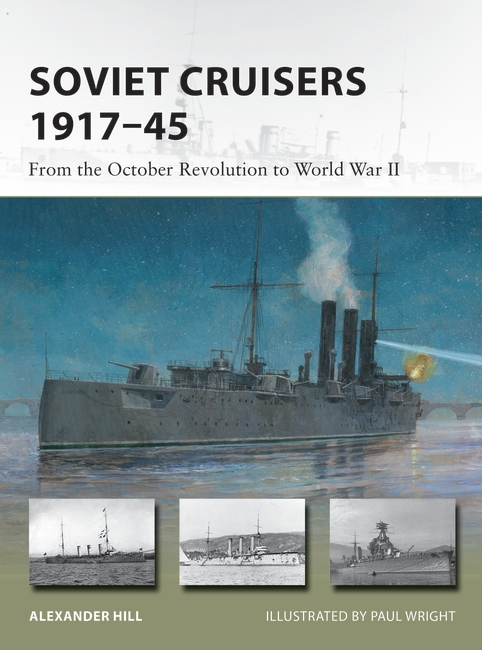
In Western histories of the Second World War the Soviet Navy is often written off as all but irrelevant. With the Baltic Fleet bottled up near Leningrad for most of the war, the smaller Northern Fleet is often derided in the English-language literature for not playing the sort of role in the defence of Allied Arctic Convoys that the British Admiralty expected of it. At times British criticism was unduly harsh for a fleet that had only been created in 1937, and even then from a flotilla established only in 1933. There was however little doubt that according to many indicators the Soviet Navy lagged behind its British allies. One area where the Soviet Navy lagged behind in particular was in terms of technology (e.g. radar and ASDIC). That situation is perhaps not surprising given the extent to which the Soviet Union was compelled to invest the bulk of its resources during the mid-late 1930s in land and air forces for the predicted major war on land.
The cruisers of the Baltic Fleet were bottled up in the Baltic for much of the war – and even when they weren’t, they were extremely vulnerable to German airpower, mines and submarines in the confined waters of the Baltic. The Northern Fleet – the youngest of the three fleets involved in the war against Nazi Germany – didn’t have any cruisers until the United States provided it with the cruiser Milwaukee in lieu of Italian reparations in 1944. Soviet naval leaders weren’t in a hurry to risk the embarrassment of losing such a vessel at the end of the war, and so the Milwaukee – renamed Murmansk in Soviet service – saw little use.
What is often forgotten or ignored in the Western literature is just how active the Soviet Navy was in the Black Sea. In the Black Sea operational conditions were undoubtedly better for the Soviet Navy than in the far north or the Baltic. German naval assets in the Black Sea were limited to lighter forces, and the Rumanian navy was hardly in a position to challenge the Black Sea Fleet. Axis ground forces were able to push the Red Army from the key naval bases of Odessa and Sevastopol, but the Black Sea Fleet continued to operate from the Caucasus region even as German forces pushed towards the oilfields in the south during the summer of 1942. For much of the time it was left to the German Luftwaffe to try to keep the Black Sea Fleet at bay, and demands elsewhere for Luftwaffe aircraft were increasingly high as the war turned in the Allies’ favour and the Soviet air forces started to gain the upper hand on the Eastern Front.
Interestingly – given the extent to which the Soviet Union had gained the upper hand by the second half of the war on Germany’s Eastern Front, it was actually during the dark months of 1941–42 that the Soviet Black Sea Fleet – including its cruisers – played arguably its most significant role in supporting Soviet forces on land. Not only were units of the Black Sea Fleet extremely active, but also successful in carrying out missions assigned to them such as ferrying troops and supplies to and from besieged ports and providing gunfire support for troops on land. It was the older cruisers in particular that bore the brunt of this work, given that they were seen as more expendable than their counterparts from the late 1930s. Nonetheless, in the Western historiography their exploits are to a large extent lost in the defeats on land. When one examines in detail the activities of the Black Sea Fleet its achievements in difficult circumstances were considerable.
When setting about writing Soviet Cruisers 1917–45 I had already written Soviet Destroyers of World War II for Osprey. That book, in dealing with a significant number of vessels in a relatively short book, didn’t have the space for the sort of examination of the activities of individual vessels that has proven possible in Soviet Cruisers 1917–45. One thing I hope that readers will take away from Soviet Cruisers 1917–45 is just how active the Soviet cruisers of the Black Sea Fleet were – illustrated in a number of examples. In this context, that only a single Soviet cruiser was lost outright as a direct result of enemy action during the war is in itself a significant achievement.
I also hope that the material on the Soviet Navy at the time of and in the immediate aftermath of the October Revolution of 1917 will be both new to and of interest to readers. The fledgling Soviet Navy inherited large numbers of warships from its Tsarist predecessor, even if many were soon scrapped in the face of the harsh financial realities of the early 1920s. Only under Stalin during the late 1920s and 1930s was the Soviet Navy to be rebuilt – and even then that rebuilding was curtailed by the land war looming on the horizon.


Comments
You must be logged in to comment on this post. Click here to log in.
Submit your comment